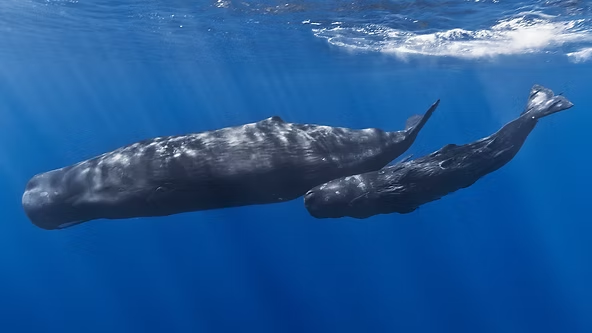Sperm Whales: Giants of the Deep
Sperm whales are the largest toothed whales and have one of the widest ranges of any marine mammal. They inhabit deep seas worldwide, from the equator to the Arctic and Antarctic pack ice edges.
Pods and Social Behavior
Sperm whales often travel in pods of 15 to 20 individuals. Females and calves stay in pods year-round, exhibiting communal childcare, while males wander alone or migrate between groups to higher latitudes for mating. Adult males eventually leave the pod, sometimes forming new male-only groups. Female and juvenile whales remain in temperate and tropical zones.
Historical Whaling and Ambergris
During the 18th and 19th centuries, sperm whales were heavily hunted for oil and ambergris, a valuable substance formed around squid beaks in their stomachs. The famous albino whale Moby Dick was inspired by a real sperm whale named Mocha Dick.
Hunting Techniques
Sperm whales consume up to 900 kilograms (2,000 lbs) of food daily. They dive between 300 to 1,200 meters (990–4,000 feet), and sometimes as deep as 2 kilometers (1.2 miles), to hunt giant squid using echolocation, producing the loudest animal-made sounds in the world. Their bottom jaw teeth, 20–24 cm long, fit into sockets on the lower jaw, while the upper teeth never emerge. Pods may cooperate to herd prey into tighter clusters for easier feeding.
Swimming Speed
Sperm whales cruise at 5–15 km/h (3–9 mph) but can reach speeds of 35–45 km/h (22–28 mph) for up to an hour, powered by their massive tail flukes.
Social Behaviors
Though hunting dominates most of their time, sperm whales display social behaviors such as calling, rubbing, and protective formations. When threatened, they form a “marguerite configuration,” using tails outward to shield vulnerable pod members.

